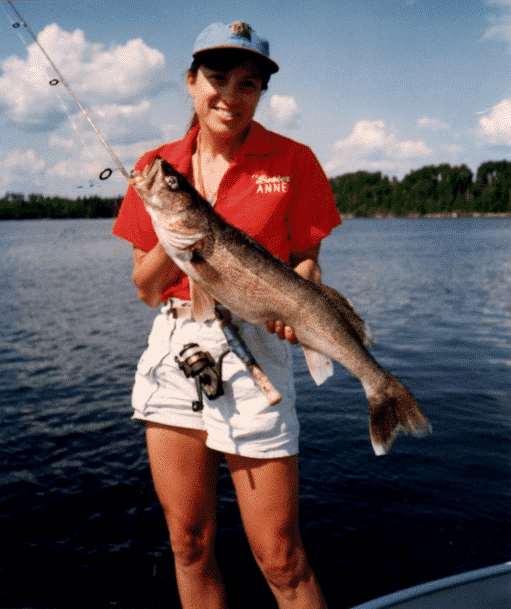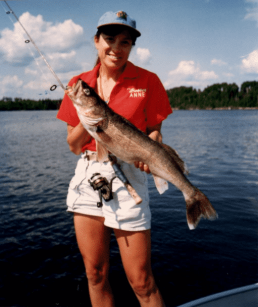How you can improve your fishing with an underwater camera
SHARE THIS POST

MWO eNewsletter Exclusive!
“Bobber” Anne (with commentary by MidWest Outdoors e-newsletter editor Bobby Bergren) reveals insight on how an underwater camera will help you find more fish.
Dan Gapen and I started using an underwater camera we discovered a goodly number of tactics used by freshwater fish, such as the Bump and Stun. This maneuver was intently observed on a lake called Kagianagami, where deep-water walleyes rise off bottom to feed on ciscoes. Ciscoes in Kag suspend at 20 feet, 24 hours a day. The black-backed walleyes rise from 90 to 110 feet of water late each day (about 4 p.m.) to feed on the reliable meals.
With a river system running through Kagianagami, there is no summer thermocline, so stratified layers of water temperature and oxygen do not restrict vertical fish movements. Most of what I noted regarding this lake, like so many others, needs more underwater research. I suspect that the bottom of Kag is loaded with Benthic Zones, because of the deep currents from which the walleyes rise.
Are you enjoying this post?
You can be among the first to get the latest info on where to go, what to use and how to use it!
The key part in implementing a camera to your arsenal is finding out how the fish are feeding and the opportune times they eat. By finding the bait for the specific type of fish you are pursuing, you learn where the forage sets up on bottom structures or where they suspend. From my experience the camera has led me to one of my favorite patterns, the fall crawfish migration. One fall, I took my camera out on the boat and dropped it down to an offshore mud flat. Along with the abundance of smallmouth bass, I found little craters in the mud, no bigger than a quarter. As I progressed, I found these craters were actually holes dug by crayfish for winter hibernation. This led me to match the forage base. I then used finesse jigs with craw trailers that replicated crayfish by working them across the mud flat, subtly working the jig, just enough to “puff’ the mud up from the bottom to replicate the burrowing crayfish. The smallmouth already have a crayfish buffet, but finding the key feeding times, led to many more successful days on the water. –Bobby Bergren
Much of my time on the water during the last five years has been spent exploring the underwater world with special video gear. Much of what that underwater filming exposed will be a mainstay in our fishing patterns. I believe the most fascinating exposure was what we found on lake trout. Where they hold in the lake, what baits attract them and when they bite during the fall.
If you yearn for more information about implementing an underwater camera, be sure to check out “Bobber” Anne’s full article in the September issue of MidWest Outdoors magazine, available the first full week of September at a newsstand near you.
You can also listen to a feature-length MidWest Outdoors podcast interview with Dan Gapen, “Bobber” Anne’s mentor.
MWO
SHARE THIS POST
You may also like...
Nothing found.
Did you enjoy this post?
You can be among the first to get the latest info on where to go, what to use and how to use it!
Bobby Bergren
“Bobby B” Bergren is a smallmouth bass fishing fanatic who’s passion is fishing the Great Lakes. He has multiple first-place tournament wins on Lake Michigan. Additionally, he is a die-hard ice fishing enthusiast who targets bluegills, and dabbles in hunting and knife collecting. Bergren also engages in content creation and digital marketing for MidWest Outdoors.
